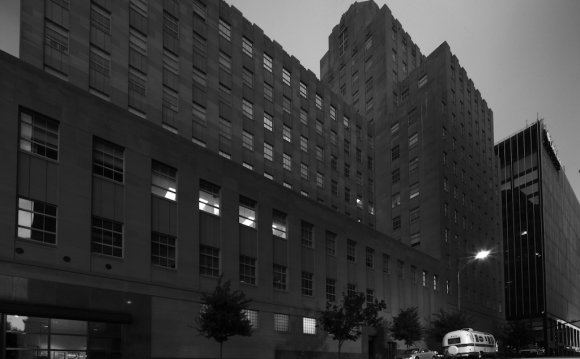
You've seen post-war houses - you may even live in one. They're everywhere - those single-story houses, sometimes split-level homes, that are boxy, brick and ordinary. Homes built after World War II were dubbed post-war, and you'll find that homes built at that time tend to come in certain styles, such as ranch or Cape Cod. Your basic post-war house is known for being basic. These houses are more functional than fun.
In New York City real estate, post-war is used to describe high-rise apartment buildings that offer residents amenities they didn't have during the pre-war era, such as an elevator or doorman. Like their single-family home counterparts, post-war buildings are known for function rather than beauty.
A post-war house, thought of as a home built in the late 1940s throughout the 1970s, is tagged for having a sameness to them, where they're indistinguishable from the rest of the neighborhood. But what they lack in originality, they make up in their dependable sturdiness.
These homes are rooted in American history, possibly some of the few home styles you learned about in high school. They were built as the American soldiers returned from fighting in World War II. Government legislation, such as the Federal Housing Administration and Servicemen's Readjustment Act, helped to fuel the housing industry - which had been flagging in the 1930s and 1940s - and suddenly millions of Americans across the country were buying up single-family houses.
Builders could hardly build them fast enough, which is why much of the artistry in houses found during the pre-war period started to disappear. But, again, that isn't to malign the post-war house. While the artistry may be missing in the post-war home, the craftsmanship isn't. As a group, these are durable, solid houses with a lot going for them.
Key Elements
- One of many similar-sized houses in the neighborhood. It may look different - some neighborhoods have the cookie cutter feeling, and many don't. But a post-war house is probably in a large neighborhood with a modest-sized, half-acre or less backyard.
- Small living space. Of course, there are exceptions, but frequently, these are homes with four to six rooms and less than 1, 000 square feet of living space.
- Picture windows. A picture window at the front of the home provides a view of the front street.
- Kitchen facing the backyard. The kitchen typically has a window allowing for a view of the backyard, and usually a back door.
- Pitched roof. The Cape Cod version of the post-war home often had a pitched roof, which meant there was space for an upstairs attic space.
- Garages. It seems crazy to imagine that there wasn't a time when attached garages and carports existed, but by the post-war years, the car was a firmly established member of the family. While houses before World War II might come without a garage, that wasn't the case for the post-war home.
- Amenities. In New York City real estate, post-war buildings offer residents amenities for a community fee, such as doorman service, elevator or laundry facilities.
Famous Examples
- Arapahoe Acres. This Colorado neighborhood of 124 was constructed between 1949 and 1957 by legendary building developer Edward Hawkins. In some way, the homes weren't your typical post-war houses - much of the building materials were concrete, glass and aluminum, and they had a unique, futuristic look. Nothing cookie cutter about Arapahoe Acres, and yet, like post-war houses, the builders set out - and achieved - to create low-cost and functional homes. The homes, which are still around today and are protected, in fact, by being on the National Register of Historic Places, are small compared to today's homes but right in line with the size of homes built in the 1950s. One very unusual feature for a post-war home: Many of the main doors are on the side of the house rather than in the front.
- The Case Study Houses. From 1945 to 1962, the magazine Arts & Architecture sponsored a project in which they commissioned prominent architects of the era to design and build inexpensive and functional model homes for all of the soldiers coming in and causing the residential housing boom. There were 36 designs, although not all of the homes were built; most that were, were in Los Angeles, with a few in San Francisco and one in Phoenix. While some homes were opulent - a couple were built in one of the wealthiest communities in the world, Bel Air - mandated in the project that each "house must be capable of duplication and in no sense be an individual 'performance.'" They wanted the best materials for the home, but the designs to be "general enough to be of practical assistance to the average American in search of a home in which he can afford to live."
Practically Speaking: Hassles and Headaches
The older a house, the more one has to worry about things like the electrical outlets, the plumbing and the roof. On the other hand, one could say the same about a house built 10 years ago, and many people would argue that these older homes of 70 years are sturdier than some houses built within the last 20 years. A home inspection will tell you whether you really need to worry or not.
RELATED VIDEO












